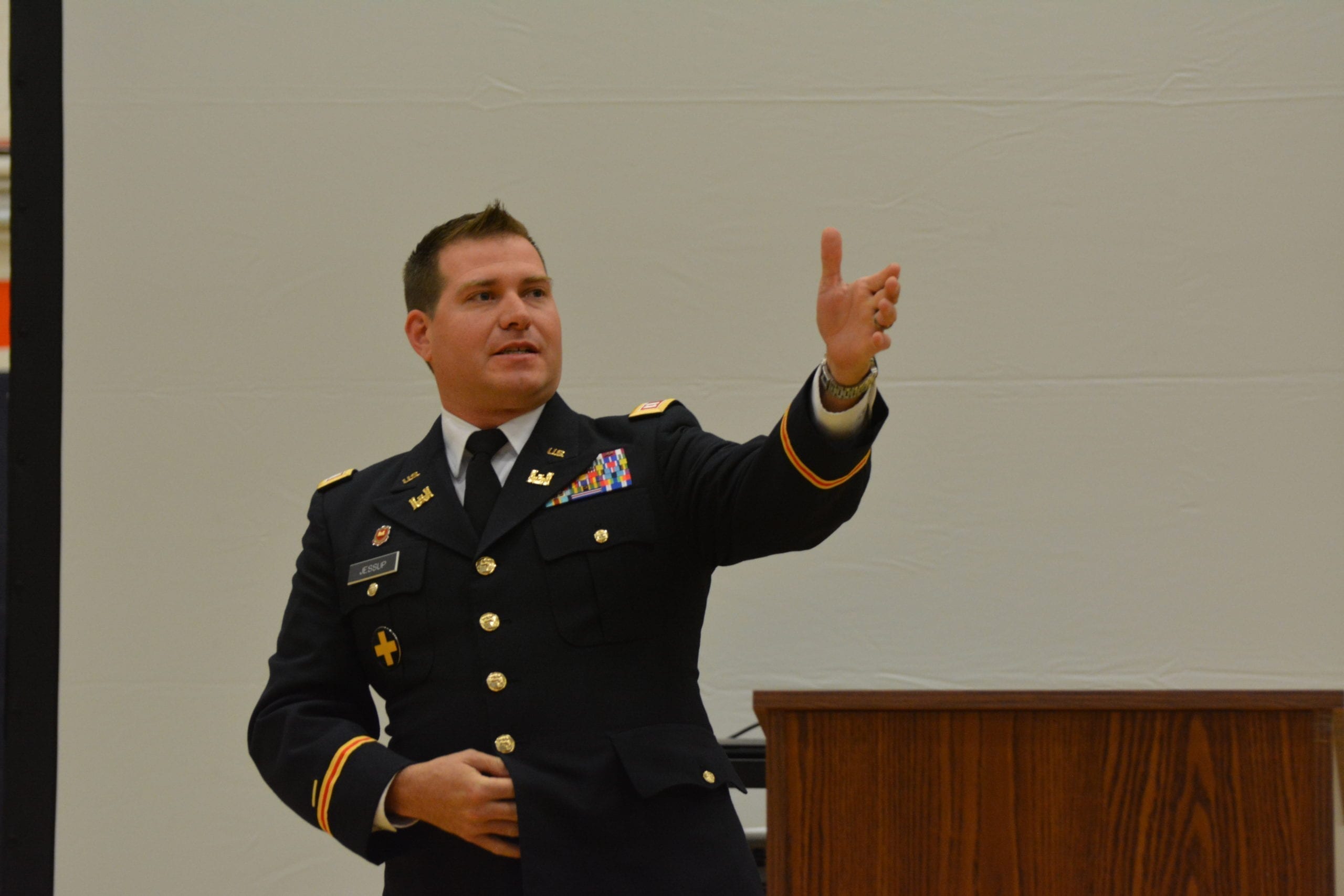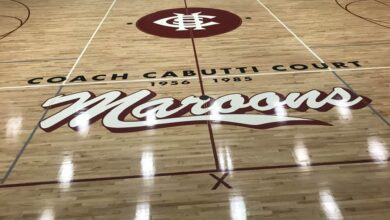Ryan: “I was determined to not let COVID take any more of our lives.”

By FRED KRONER
Dan Ryan taught an entire school year worth of mathematics classes last summer.
The lessons weren’t for advanced students or for ones enrolled in summer school.
They were for teen-agers at Mahomet-Seymour High School who are currently enrolled in either pre-calculus or honors geometry.
Despite his advance efforts, Ryan isn’t taking time off this school year. In fact, he is teaching the same material.
This could only happen in a year where the COVID-19 pandemic has created an upheaval in the educational system.
The 2019-20 school year ended with students across Illinois learning remotely from home for most of the last two months of the semester, due to the coronavirus.
“I suspected we’d be staring at similar circumstances come August, some ingredient of remote learning,” Ryan said. “And even if the best-case scenarios transpired and we returned to school as we knew it, at least I could better serve kids who were absent or had to miss class for any number of reasons.”
A veteran M-S teacher with more than two decades in the classroom, Ryan launched a plan to pre-record all of his lessons – “explorations,” he calls them – for the entire two semesters.
It was a solo venture, with Ryan standing in front of the camera and talking about subjects he knows well, keeping in mind that each class period at the high school lasts 36 minutes.
“Starting in May, I began the long process of filming our in-class explorations, minus the interactions with students, of course,” Ryan said. “While anyone watching misses out on the benefits of a question being asked and ideas being risked, by and large, I tried to simulate the discovery process as best I could, periodically encouraging kids to pause the video and try something on their own before proceeding.
“I was driven by the anticipation of what the school year would be like. The kids are worth it.”
Ryan undertook this project for two of the three courses he is teaching this school year, pre-calculus and honors geometry.
“Give or take, I would film roughly three explorations each day,” he said. “It gets to be a grind.
“Conversing with a camera instead of students, and with no feedback, isn’t a whole lot of fun, but was worthwhile. I tried to knock out a couple chapters every week. I felt good about doing that.”
He saw this as a way to be better prepared to meet the needs of students once the 2020-21 school year began.
“This way, I would be freed up to assess the kids’ daily work and better support them once the chaos of this new school year arrived,” Ryan said. “I still tinker with and re-film some explorations on the occasional weekend, but by and large, this system has worked and enabled me to get to bed at a semi-reasonable hour.”
Ryan said it was imperative to have the entire school year’s lessons finished on his end and available to students when summer vacation ended.
“I wanted to be freed up to support them with office hours, so deficits didn’t snowball,” Ryan said. “Some kids can’t handle autonomy as well as others and I need to be there to support them.”
M-S established a hybrid learning system for the fall semester. At the high school and junior high levels, some students are in-person two days a week and learn remotely three days a week. Some students, however, are totally remote five days a week.
“At any given time, I will have about half of my students in front of me (in the classroom) and about half on-line,” Ryan said.
Even with his preparation, it wasn’t always smooth sailing.
“The first week (of school), we had some rough waters,” Ryan said, “but we settled into a rhythm. Right now, we don’t even think about it.
“It’s less than ideal, but we’ve forged on and not let COVID get in the way.”
The remote learners have the advantage of not only seeing the lesson being taught in real time, but also having a reference they can look back to in the pre-recorded video that Ryan produced.
The videos help to eliminate one of the potential obstacles the at-home learners face.
“They can hear me talk without a mask and see my facial expressions,” Ryan said. “The kids are grateful and appreciate the fact they can hear me clearly with no risk of a technical glitch (since the material was pre-recorded).
“We were able to circumnavigate all of the hurdles.”
Ryan also addressed an issue which can arise when remote students are learning simultaneously with those in the classroom rather than watching the video for the day independently.
“It’s hard for the on-line kids to hear the kids who are in class,” Ryan said. “I’ll try to call on kids on the screen and jack up the volume so everyone in class can hear.
“It’s not a two-way street, so by default I rely on kids who are remote learning.”
When questions – or comments – do come from students in class, Ryan is prepared.
“I repeat and relay what they are saying,” he said. “It’s a necessary part of our routine.”
Ryan encourages interaction from the students and welcomes questions.
“That’s one way my students learn best,” he said. “If one person has a question, usually eight others learn from it. Sometimes they will ask a question that six other kids had.”
The pre-recorded lessons on video are beneficial in other ways, too. If a student misses something in class, they miss it forever. Not so with what Ryan pre-recorded.
“Some kids need to go back in a more relaxed phase and formulate questions to ask the next morning in my office hours,” Ryan said. “They can go back and review.”
Ryan realizes his subjects of expertise were well-suited for the plan he developed.
“In math, we have the luxury of a continual and sequential nature where it builds off the previous day,” he said. “We’ve had an easier time adjusting than other subjects. Math lends itself to this format.
“Categorically, it would be more difficult for a lab science. How do you simulate a lab if kids are not physically there? I feel blessed and fortunate that we’ve had an easier adjustment than some of my colleagues.”
Ryan is doing what he can for all students, regardless of their mode of learning. In his opinion, there is nothing better than the tried-and-true form of education.
“It’s easier to master things when you’re truly in-person,” he said, “but ultimately it comes down to the inner fabric of the kid.
“Some remote learners are thriving and handling it beautifully. The question is, will they advocate for themselves when they have questions? It can be a struggle for kids remotely, but I can’t help them if I don’t know there is an issue.
“My guess is, if data were available, it’s harder for remote learners overall, but it’s not an unclimbable mountain.”
Now in his 23rd year at M-S, Ryan said he likely couldn’t have pulled off his undertaking as a young teacher.
“Knowing where I was at 25, my lack of technical savvy, it wasn’t on our radar,” he said. “No way I could have done that.”
When he set up the camera, and turned on the audio, Ryan was hopeful that his efforts would ultimately pay dividends.
“Definitely the virus was the gas pedal,” he said. “I literally implemented a lot of stuff overnight.
“I was determined to not let COVID take any more of our lives than it already had. I’d describe my journey as a mad scramble from March 12th on. I had to find ways. I got out in front of it.”
He has also been open to suggestions as the first semester progressed.
“The students have had some great tips on how to use Google Classroom more efficiently, streamline it more for them and make it more user-friendly so they are not bombarded by email messages every few minutes,” Ryan said.
“That’s still an evolving process and I’m looking forward to learning more from them.”
In Ryan’s math classes, test-taking looks like it did a generation ago. Students put pen – or pencil – to paper.
“In math, the (computer) software has not caught up to our kids to be able to type certain symbols (on their laptops or chromebooks),” Ryan said. “The more efficient way is by pencil and paper.”
That is even true for the remote learners.
“I send them a scanned copy (of the test) timed to release before class starts,” Ryan said. “They print it out and scan it back to me (completed) at the end of the hour.”
When he evaluates the first semester, Ryan believes he has made the best of the situation he faced.
“As we head towards break, I’m proud of what we’ve accomplished together,” Ryan said. “It hasn’t been perfect, and I have much more to learn, but the kids have been gracious and resourceful.”
Ryan credits the students for their aid in helping his project go off unimpeded.
“My students have played an indispensable role in any successes we’ve had,” Ryan said. “Sometimes that’s in overt ways, via suggestions and feedback, but more often, that has been in the invisible ways which they are not even aware.
“In the midst of the challenges and uncertainties, I’ve caught myself thinking, ‘Man, how good do we have it?’ That’s not to be dismissive of the pandemic at all.
“I just think it speaks to how willing and gracious my students have been from Day 1. I just know they’ve been a wonderfully reliable true North Star for me.
“They’re my powerful ‘why,’ and that has given me great fuel these past nine months.”




